Pulsed Magnetic Treatment of Cobalt for Enhanced Microstructures and Mechanical Properties
Abstract
:1. Introduction
2. Materials and Methods
3. Results and Discussions
3.1. XRD Pattern and Hardness Change
3.2. Phase Transition and Misorientation
3.3. Defects Change
4. Conclusions
Author Contributions
Funding
Institutional Review Board Statement
Informed Consent Statement
Data Availability Statement
Acknowledgments
Conflicts of Interest
References
- Yin, Y.D.; Rioux, R.M.; Erdonmez, C.K.; Hughes, S.; Somorjai, G.A.; Alivisatos, A.P. Formation of hollow nanocrystals through the nanoscale Kirkendall effect. Science 2004, 304, 711–714. [Google Scholar] [CrossRef] [Green Version]
- Nielsch, K.; Casta, O.F.; Matthias, S.; Lee, W.; Ross, C. Synthesis of Cobalt/Polymer Multilayer Nanotubes. Adv. Eng. Mater. 2005, 7, 217–221. [Google Scholar] [CrossRef]
- Adjam, S.; Mari, D.; Lagrange, T. Strain glass transition of cobalt phase in a cemented carbide. Int. J. Refract. Met. Hard Mater. 2019, 87, 105161. [Google Scholar] [CrossRef]
- Stewart, H.A. Cryogenic treatment of tungsten carbide reduces tool wear when machining medium density fiberboard. For. Prod. J. 2004, 54, 53–56. [Google Scholar]
- Muthuswamy, P.; Dinakaran, D. Evaluation of mechanical and metallurgical properties of cryo-treated tungsten carbide with 25% cobalt. Mater. Today Proc. 2020, 43, 3463–3469. [Google Scholar] [CrossRef]
- Chen, D.; Yao, L.; Chen, Z.H.; Wang, H.P.; Peng, W. Study on Low Cycle Impact Fatigue Performance of WC-Co Cemented Carbides. Rare Met. Cem. Carbides 2017, 45, 71–75, 80. [Google Scholar]
- Quan, S.; Kang, J.; Xing, Z.; Wang, H.; Yanfei, H.; Guozheng, M.; Liu, H. Effect of pulsed magnetic field treatment on the residual stress of 20Cr2Ni4A steel. J. Magn. Magn. Mater. 2019, 476, 218–224. [Google Scholar]
- Shao, Q.; Wang, G.; Wang, H.; Xing, Z.; Cao, Q. Improvement in uniformity of alloy steel by pulsed magnetic field treatment. Mater. Sci. Eng. A 2020, 799, 140143. [Google Scholar] [CrossRef]
- Fei, H.L.; Wu, H.; Yang, X.; Xiong, J.; Liu, J. Pulsed magnetic field treatment of cBN tools for improved cutting performances. J. Manuf. Process. 2021, 69, 21–32. [Google Scholar] [CrossRef]
- Ma, L.; Zhao, W.; Liang, Z.; Wang, X.; Xie, L.; Jiao, L.; Zhou, T. An investigation on the mechanical property changing mechanism of high speed steel by pulsed magnetic treatment. Mater. Sci. Eng. A 2014, 609, 16–25. [Google Scholar] [CrossRef]
- Tang, G.; Xu, Z.; Miao, T.; Chen, X.; Zhou, H.; Lu, A. Effect of a pulsed magnetic treatment on the dislocation substructure of a commercial high strength steel. Mater. Sci. Eng. A 2005, 398, 108–112. [Google Scholar] [CrossRef]
- Li, G.R.; Li, Y.M.; Wang, F.F.; Wang, H.M. Microstructure and performance of solid TC4 titanium alloy subjected to the high pulsed magnetic field treatment. J. Alloys Compd. 2015, 644, 750–756. [Google Scholar] [CrossRef]
- Liu, J.; Wei, C.; Yang, G.; Wang, L.; Wang, L.; Wu, X.; Jiang, K.; Yang, Y. A Novel Combined Electromagnetic Treatment on Cemented Carbides for Improved Milling and Mechanical Performances. Metall. Mater. Trans. A 2018, 49, 4798–4808. [Google Scholar] [CrossRef]
- Huang, J.Y.; Wu, Y.K.; Ye, H.Q. Phase transformation of cobalt induced by ball milling. Appl. Phys. Lett. 1995, 66, 308. [Google Scholar] [CrossRef]
- Cai, Y.; Zhu, L.; Cui, Y.; Shan, M.; Han, J. Fracture and wear mechanisms of FeMnCrNiCo + x(TiC) composite high-entropy alloy cladding layers. Appl. Surf. Sci. 2020, 543, 148794. [Google Scholar] [CrossRef]
- Glez, J.C.; Driver, J. Orientation distribution analysis in deformed grains. J. Appl. Crystallogr. 2001, 34, 280–288. [Google Scholar] [CrossRef]
- Kostka, A.; Tak, K.G.; Hellmig, R.J.; Estrin, Y.; Eggeler, G. On the contribution of carbides and micrograin boundaries to the creep strength of tempered martensite ferritic steels. Acta Mater. 2007, 55, 539–550. [Google Scholar] [CrossRef]
- Calcagnotto, M.; Ponge, D.; Demir, E.; Raabe, D. Orientation gradients and geometrically necessary dislocations in ultrafine grained dual-phase steels studied by 2D and 3D EBSD. Mater. Sci. Eng. A 2010, 527, 2738–2746. [Google Scholar] [CrossRef]
- Wang, C.; Shen, X.J.; An, Z.B.; Zhou, L.C.; Chai, Y. Effects of laser shock processing on microstructure and mechanical properties of K403 nickel-alloy. Mater. Des. 2016, 89, 582–588. [Google Scholar] [CrossRef]
- Zhang, L.; Hu, Z.; Zhang, L.; Wang, H.; Li, J.; Li, Z.; Yu, J.; Wu, B. Enhancing the strength-ductility trade-off in a NiCoCr-based medium-entropy alloy with the synergetic effect of ultra fine precipitates, stacking faults, dislocation locks and twins. Scr. Mater. 2022, 211, 114497. [Google Scholar] [CrossRef]
- Liu, X.Y.; Capolungo, L.; Hunter, A. Screw dislocation impingement and slip transfer at fcc-bcc semicoherent interfaces. Scr. Mater. 2021, 201, 113977. [Google Scholar] [CrossRef]
- Liu, W.; An, X.; Jiang, W.; Ni, S.; Song, M. Microstructural evolution of a polycrystalline cobalt during tensile deformation. Mater. Sci. Eng. A. 2021, 826, 141970. [Google Scholar] [CrossRef]
- Ma, R.B.; Zhou, L.L.; Liang, Y.C.; Chen, Q.; Tian, Z.; Liu, R.S.; Mo, Y.F.; Gao, T.H.; Xie, Q. The effect of HCP on the formation of twin boundaries and dislocations in Ni–Co alloys. Curr. Appl. Phys. 2021, 29, 18–23. [Google Scholar] [CrossRef]
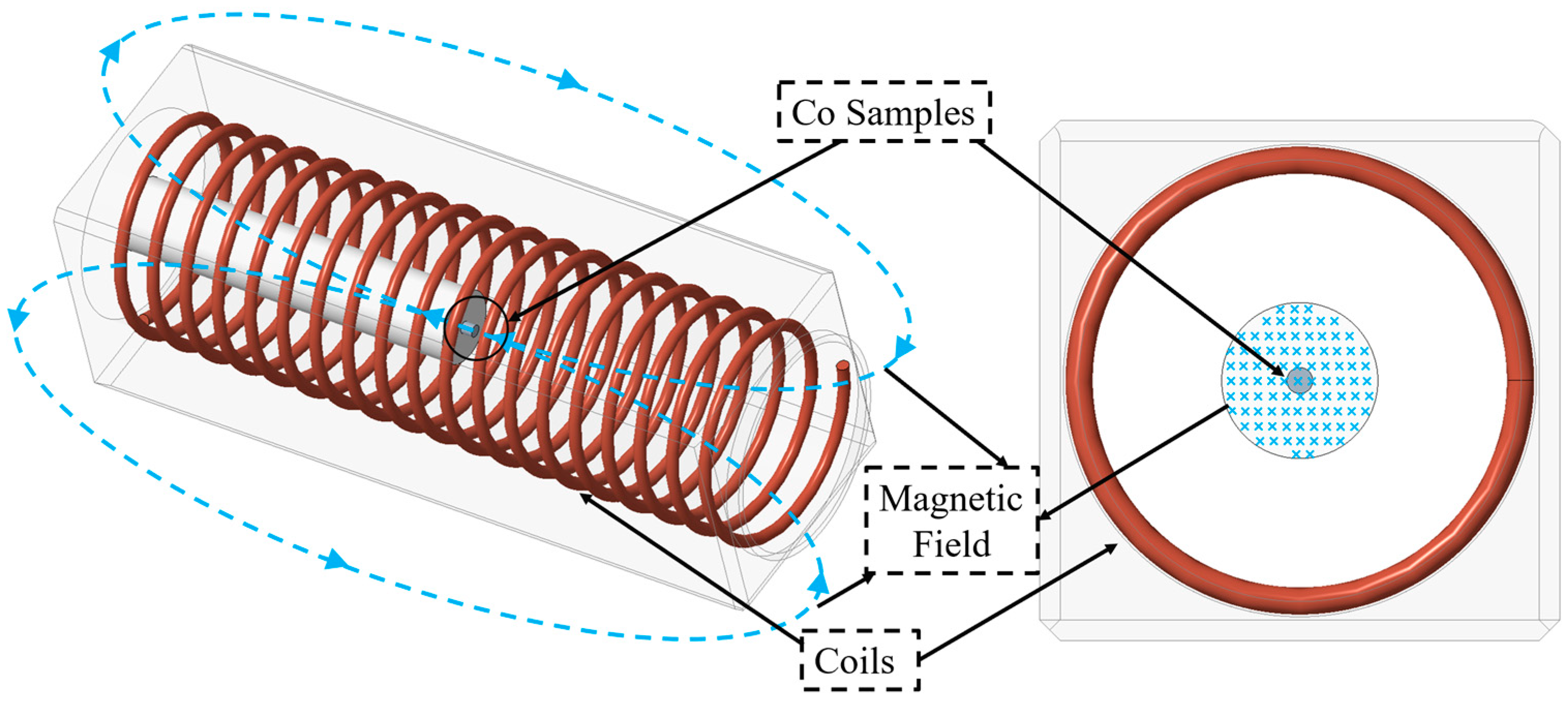
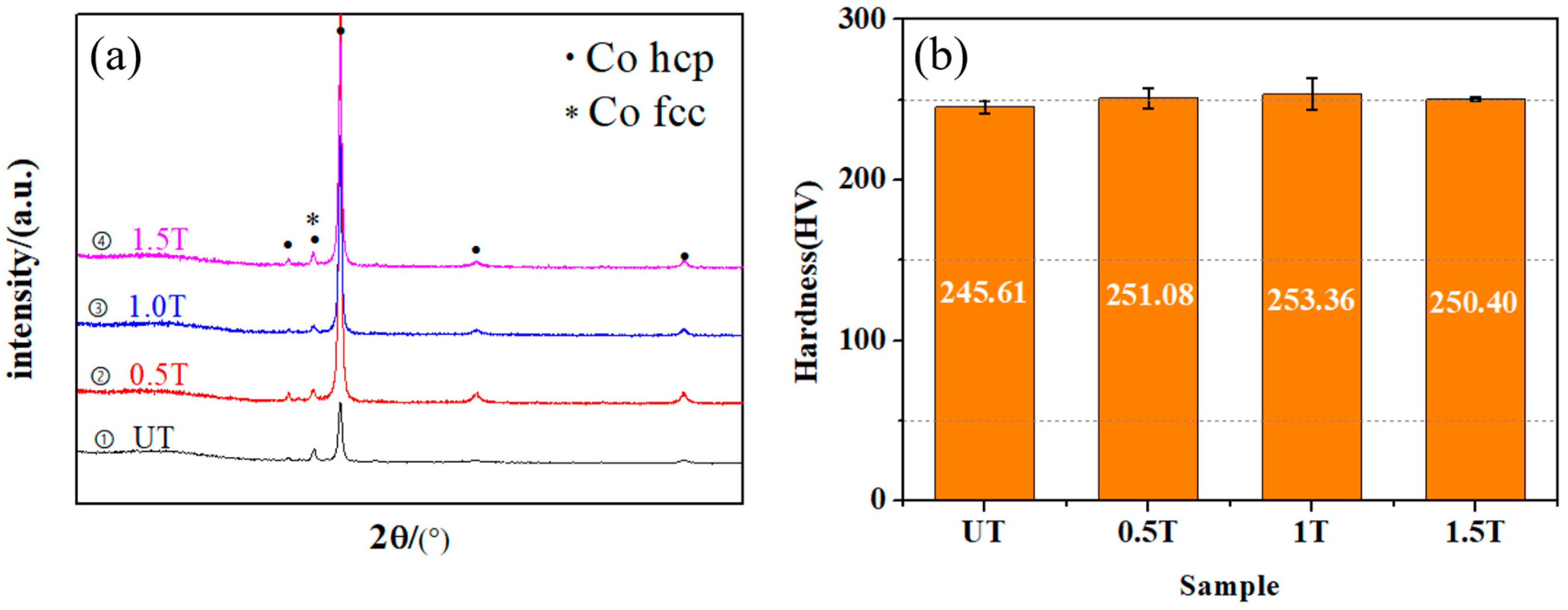
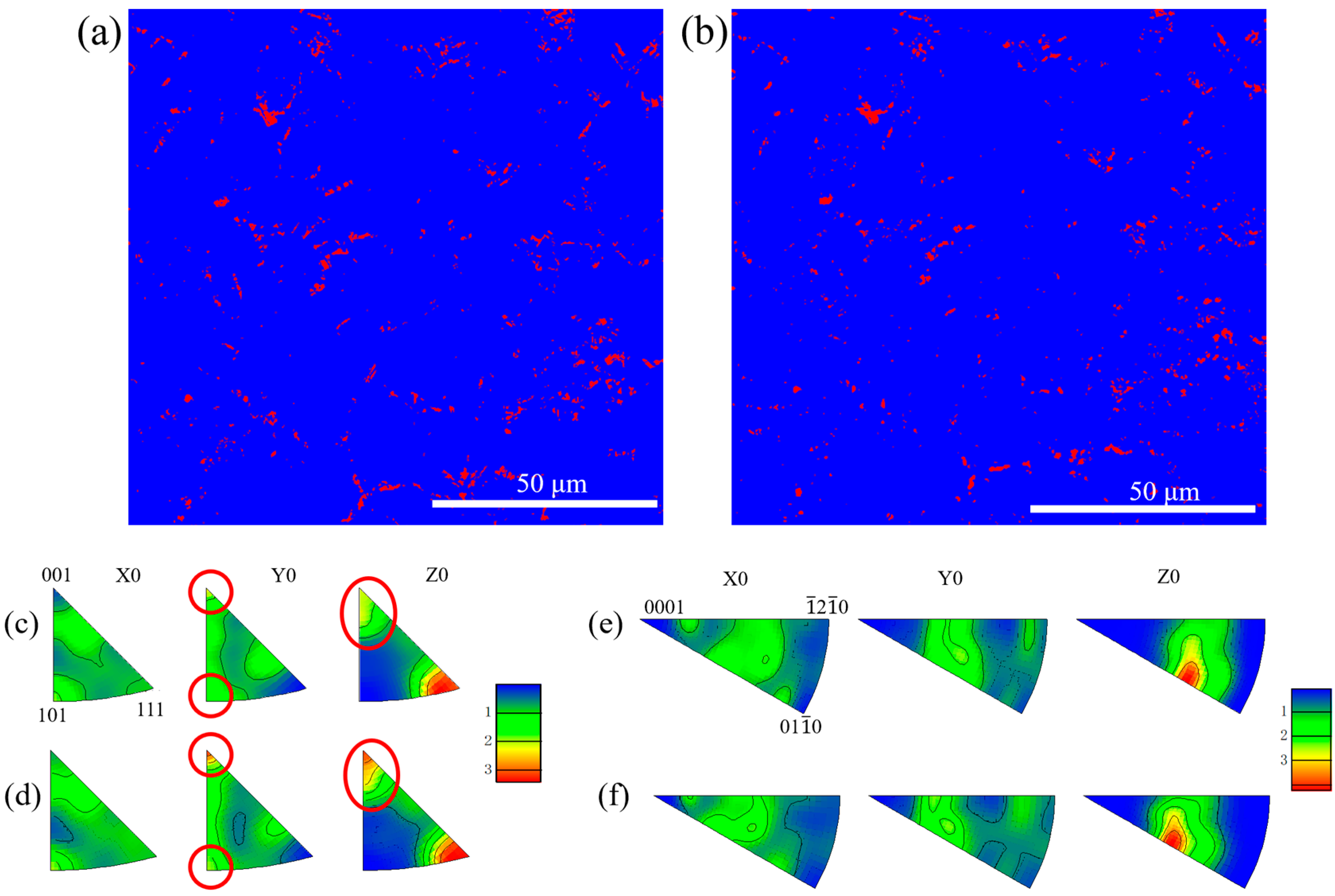
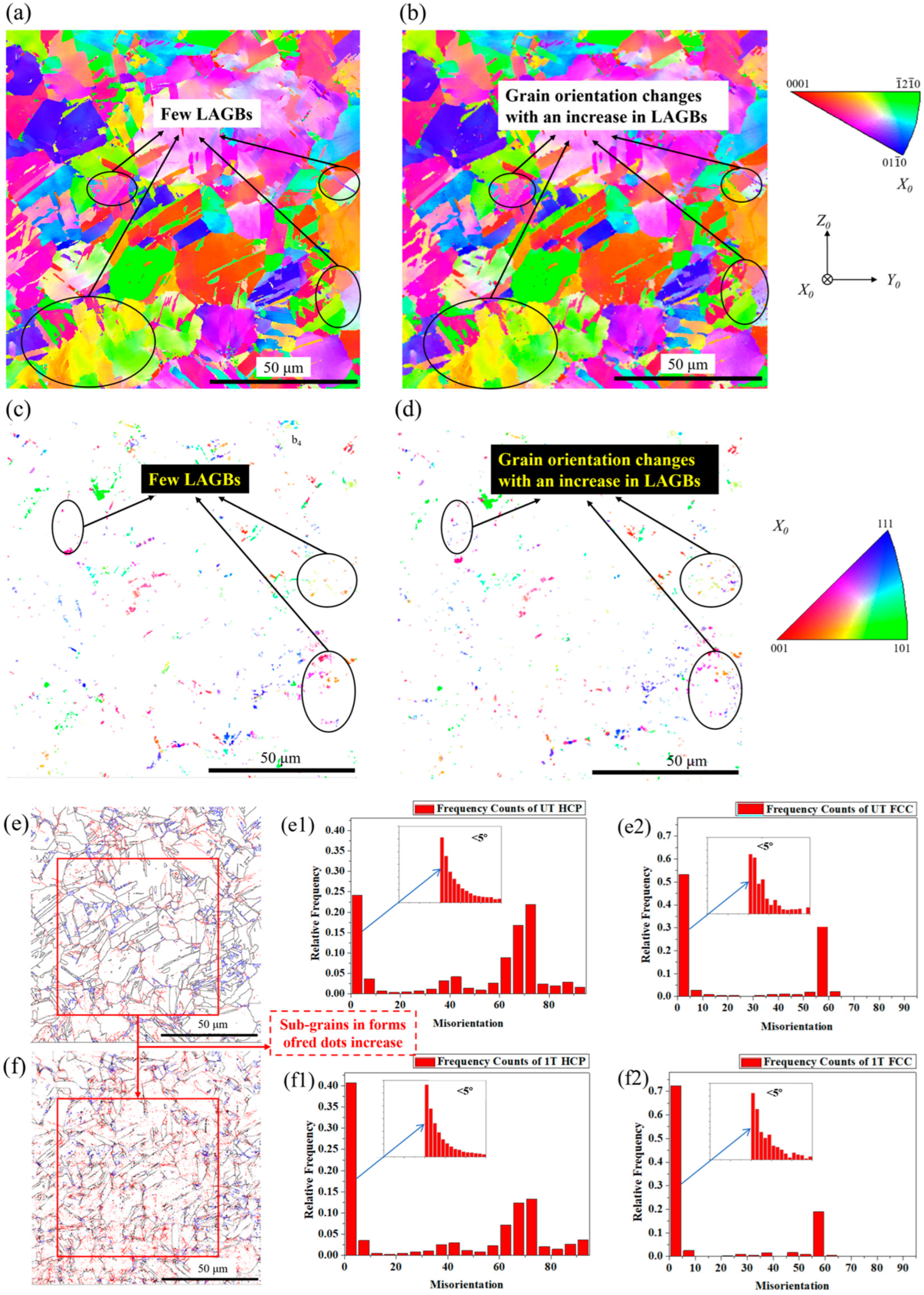
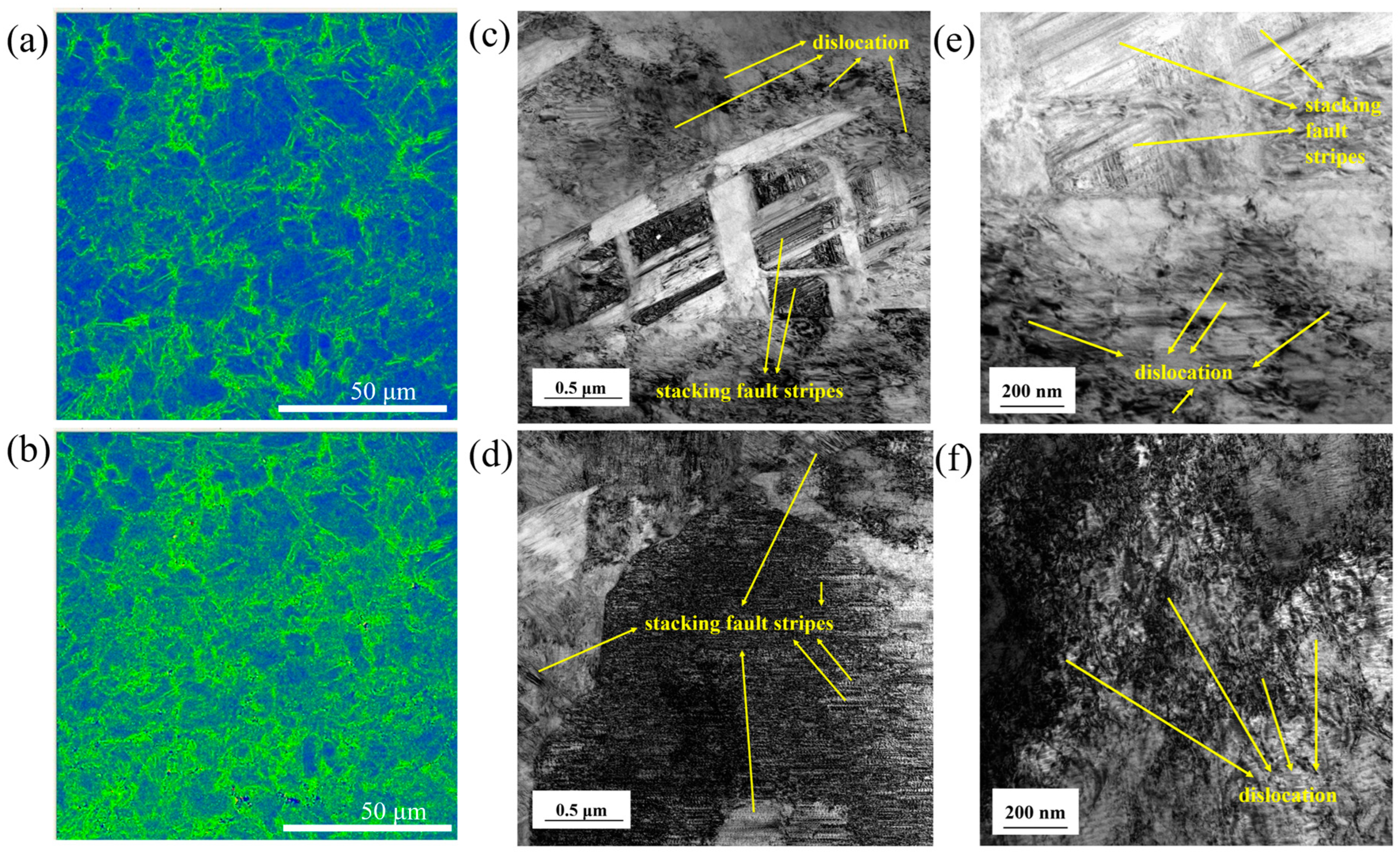
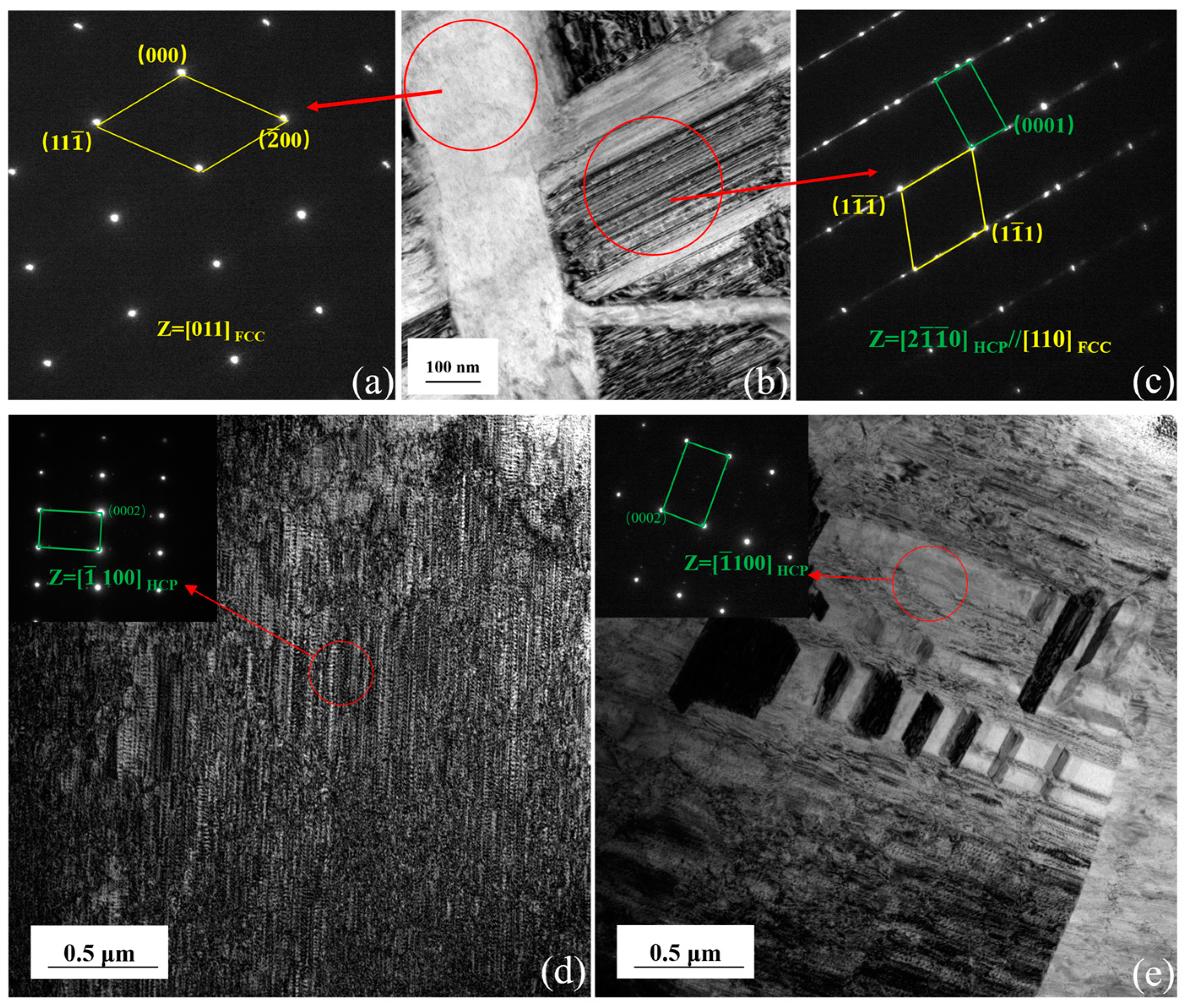
| Phase | UT | 1T |
|---|---|---|
| HCP (ε-Co) | 97.79% | 97.98% |
| FCC (α-Co) | 2.21% | 2.02% |
Publisher’s Note: MDPI stays neutral with regard to jurisdictional claims in published maps and institutional affiliations. |
© 2022 by the authors. Licensee MDPI, Basel, Switzerland. This article is an open access article distributed under the terms and conditions of the Creative Commons Attribution (CC BY) license (https://creativecommons.org/licenses/by/4.0/).
Share and Cite
Li, Y.; Guo, H.; Zhang, L.; Chen, Z.; Liu, L.; Liu, J. Pulsed Magnetic Treatment of Cobalt for Enhanced Microstructures and Mechanical Properties. Metals 2022, 12, 1775. https://doi.org/10.3390/met12111775
Li Y, Guo H, Zhang L, Chen Z, Liu L, Liu J. Pulsed Magnetic Treatment of Cobalt for Enhanced Microstructures and Mechanical Properties. Metals. 2022; 12(11):1775. https://doi.org/10.3390/met12111775
Chicago/Turabian StyleLi, Yajie, Han Guo, Lin Zhang, Zhe Chen, Lanhui Liu, and Jian Liu. 2022. "Pulsed Magnetic Treatment of Cobalt for Enhanced Microstructures and Mechanical Properties" Metals 12, no. 11: 1775. https://doi.org/10.3390/met12111775
APA StyleLi, Y., Guo, H., Zhang, L., Chen, Z., Liu, L., & Liu, J. (2022). Pulsed Magnetic Treatment of Cobalt for Enhanced Microstructures and Mechanical Properties. Metals, 12(11), 1775. https://doi.org/10.3390/met12111775




